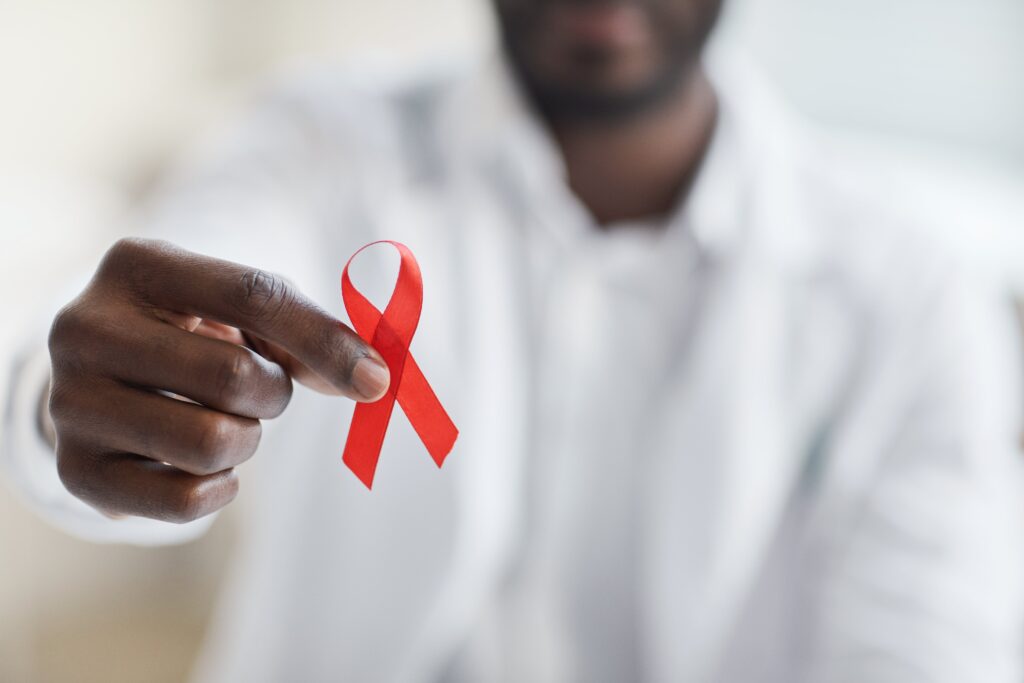While the African continent has long been plagued by the HIV epidemic, many countries have since embarked on ambitious health policies, barely slowed by the Covid episode. On this December 1st, World AIDS Day provides an opportunity to take stock of the situation, and to highlight issues that go far beyond the health and medical impact of the epidemic, to include new economic and socio-cultural implications.
HIV in Africa: spectacular advances
In 2022, 39 million people worldwide were living with HIV, including 1.3 million newly infected. Asia-Pacific accounted for 25% of these new infections, with Africa no longer such a poor performer. While it’s true that African women and girls are still very much affected by HIV in sub-Saharan Africa, the continent has seen real progress in recent years.
An ailing healthcare system with mixed results
According to UNAIDS, an international organization comprising 11 United Nations agencies working to combat AIDS, states such as Eswatini, Rwanda, Zimbabwe, Botswana and Tanzania have already achieved the so-called 95/95/95 targets: 95% of HIV-infected patients are aware of their serostatus; 95% of sufferers are receiving antiretroviral treatment; and 95% of patients on treatment have their viral load below positive thresholds.
In sub-Saharan Africa, where 65% of all HIV-positive people reside, the report “The Path that Ends AIDS” states that 8 states will soon achieve this 95/95/95 target. A country like Lesotho, long one of the world’s worst hit in terms of HIV prevalence, has now surpassed the 90/90/90 target, thanks to significant support from UNAIDS. While Africa has paid a heavy price for AIDS in recent years, optimism is once again reasonable.
These advances in the fight against HIV confirm the evolution of health standards in Africa, with an increasingly mature and efficient medical market: this is in line with the vision that Semen Africa Consulting has been pursuing for many years. Political players, international institutions and private investors understand that an ambitious health policy goes beyond the strictly sanitary framework. According to some studies, the AIDS epidemic is responsible for the loss of 2 to 4 GDP points per year in Africa. The fight against HIV therefore remains a sine qua non and a prerequisite for any sustainable economic development: health policy and health economics now work in synergy.
Children at the heart of HIV policy in Africa

Following the example of the Global Alliance to End Childhood AIDS, which met in early 2023 in Tanzania with UNICEF support, African countries are seeking to eradicate AIDS in children by 2030. Indeed, it is estimated that only 52% of children living with HIV today benefit from life-saving antiretroviral treatment, which explains why 15% of AIDS deaths involve children, even though they represent only 4% of those affected.
To close this gap, four pillars of action have been defined in terms of AIDS prophylaxis and HIV treatment: early screening and treatment of children, surveillance of pregnant and breast-feeding women to break vertical transmission, increased prevention targeting adolescents and pregnant women, and removal of social or structural barriers preventing access to health services.
While it is now clear that health economics and health policy are inseparable, the socio-cultural component must not be forgotten either.
Particular attention must be paid to gender equality and anti-discrimination policies, following the example of Rakhantša Lehloebi in Lesotho, a 19-year-old activist who was infected with HIV at birth.
Despite pressure and taboos, he dared to reveal his HIV-positive status, encouraging other men to get tested and giving visibility to the fight against HIV.
Campaigns such as these go a long way towards raising public awareness.
In a country like Lesotho, once home to the second-highest HIV prevalence in the world, the 95/95/95 target now looks achievable, with the hope of putting an end to AIDS as early as 2030.
What if December 1, 2030 finally became a day like any other?



